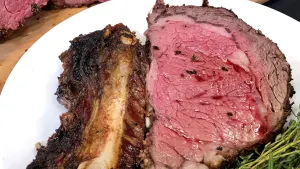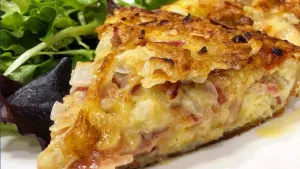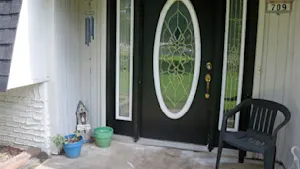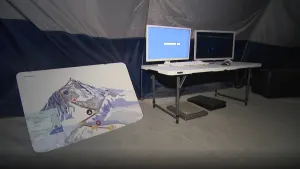More Stories
Major League Baseball’s playoffs are underway, capping off a season in which one of the biggest stories was the league cracking down on pitchers using foreign substances to help them get more spin on the ball.
But for decades, there has been one substance that has been applied to every ball used in every game – mud. And most of it comes right from New Jersey.
Jim Bintliff stands ankle-deep in the muck of a South Jersey creek filling buckets with mud. It is the way his father did it and his grandfather before him.
“When my father was still doing it, we used to come by boat, spending the day out here on the creek waiting for low tide,” says Bintliff.
He and millions of other Americans will see the fruits of his labor on TV in Major League Baseball games. The mud that Bintliff shovels, packages and sells as Lena Blackburne’s Baseball Rubbing Mud, has been used to rub down every baseball used in the Major Leagues for more than 70 years. Minor leagues as well.
It is perhaps one of the most unique family businesses in the world.
“That’s the whole thing, man. That’s what we live for. Knowing that basically my DNA is on always every pitch thrown in the Majors – it’s nice to know,” Bintliff says.
The story starts in the early 20th century with teams and umpires looking for a good way to get the slippery sheen off new baseballs so that pitchers could get a better grip on the ball. They tried infield dirt and tobacco juice.
And then in the 1930s, Lena Blackburne – a retired pitcher who was then coaching for the Philadelphia Athletics, brought some mud from a fishing hold near his house into the team clubhouse.
The muck worked better than anything teams had used before. Blackburne began selling the stuff. By 1938 every American League team was using it. The National League came later.
When Blackburne got too old to harvest the mud, he turned the business - and the secret location of the mud - over to his friend John Haas, who was Bintliff's grandfather. The shovel was passed to Bintliff's father and finally to him around 2000. A retired printing press operator, Bintliff has his assistant Matt Pretino handle the heavy lifting now.
Business is better than ever, with half of the NFL and many college teams using the mud on their footballs.
“With the addition of football, it’s become a year-round thing,” Bintliff says.
Other companies have tried to produce something that works as well. Major League Baseball ran an experiment in the minor leagues in recent years with a new ball that didn't need to be rubbed down, but it didn't work. It seems as if there is no replacement for the Garden State’s special mud.
News 12 New Jersey was sworn to secrecy of the location of Bintliff’s mud hole.
More from News 12
1:31

What's Cooking: Uncle Giuseppe's Marketplace's prime rib roast
1:30

Looking for a road trip? Check out Big Snow at American Dream in East Rutherford
1:27

What's Cooking: Uncle Giuseppe's quiche lorraine
2:34

Guide: Safety tips to help prevent home burglaries
2:19

Guide: Safety measures to help prevent fires and how to escape one
2:36
